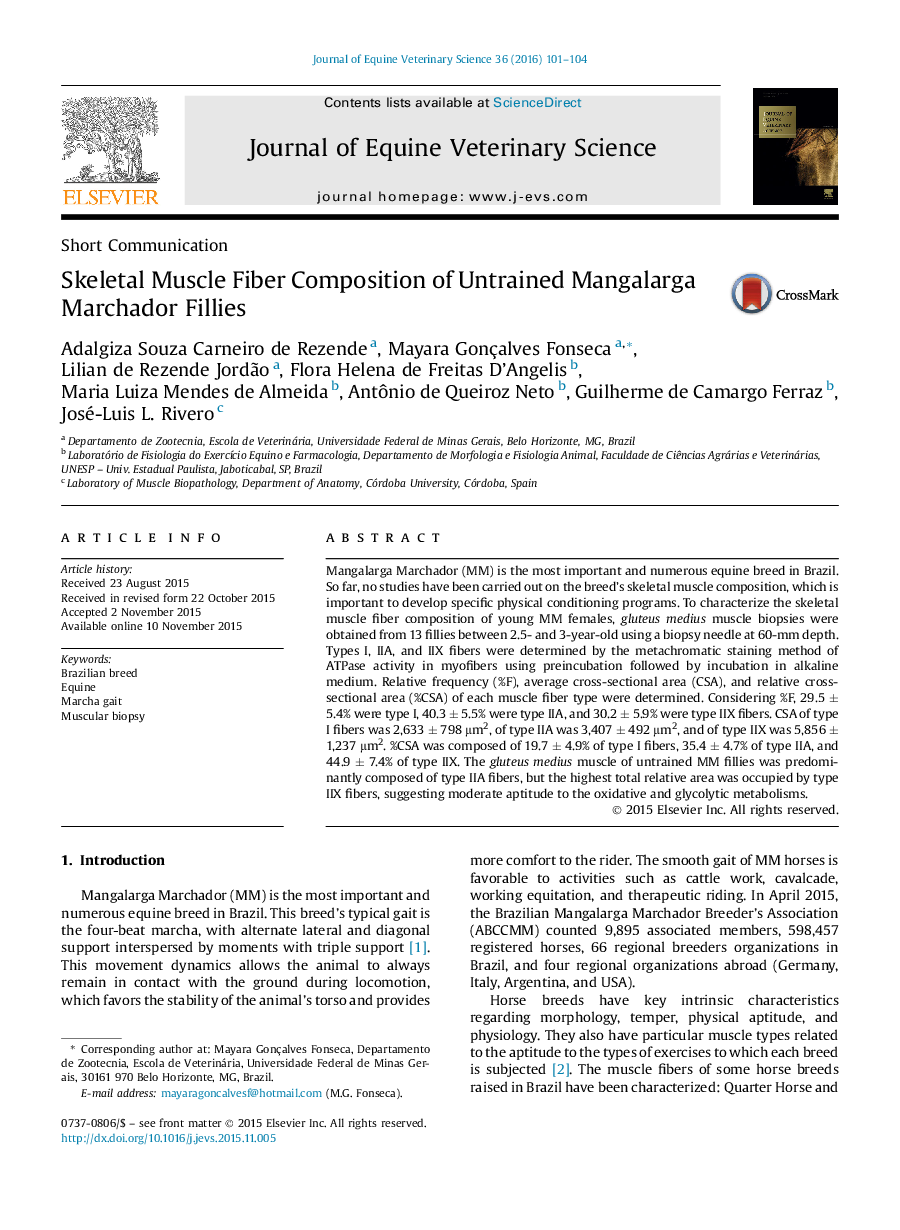| Article ID | Journal | Published Year | Pages | File Type |
|---|---|---|---|---|
| 2394771 | Journal of Equine Veterinary Science | 2016 | 4 Pages |
Abstract
Mangalarga Marchador (MM) is the most important and numerous equine breed in Brazil. So far, no studies have been carried out on the breed's skeletal muscle composition, which is important to develop specific physical conditioning programs. To characterize the skeletal muscle fiber composition of young MM females, gluteus medius muscle biopsies were obtained from 13 fillies between 2.5- and 3-year-old using a biopsy needle at 60-mm depth. Types I, IIA, and IIX fibers were determined by the metachromatic staining method of ATPase activity in myofibers using preincubation followed by incubation in alkaline medium. Relative frequency (%F), average cross-sectional area (CSA), and relative cross-sectional area (%CSA) of each muscle fiber type were determined. Considering %F, 29.5 ± 5.4% were type I, 40.3 ± 5.5% were type IIA, and 30.2 ± 5.9% were type IIX fibers. CSA of type I fibers was 2,633 ± 798 μm2, of type IIA was 3,407 ± 492 μm2, and of type IIX was 5,856 ± 1,237 μm2. %CSA was composed of 19.7 ± 4.9% of type I fibers, 35.4 ± 4.7% of type IIA, and 44.9 ± 7.4% of type IIX. The gluteus medius muscle of untrained MM fillies was predominantly composed of type IIA fibers, but the highest total relative area was occupied by type IIX fibers, suggesting moderate aptitude to the oxidative and glycolytic metabolisms.
Keywords
Related Topics
Life Sciences
Agricultural and Biological Sciences
Animal Science and Zoology
Authors
Adalgiza Souza Carneiro de Rezende, Mayara Gonçalves Fonseca, Lilian de Rezende Jordão, Flora Helena de Freitas D'Angelis, Maria Luiza Mendes de Almeida, Antônio de Queiroz Neto, Guilherme de Camargo Ferraz, José-Luis L. Rivero,
